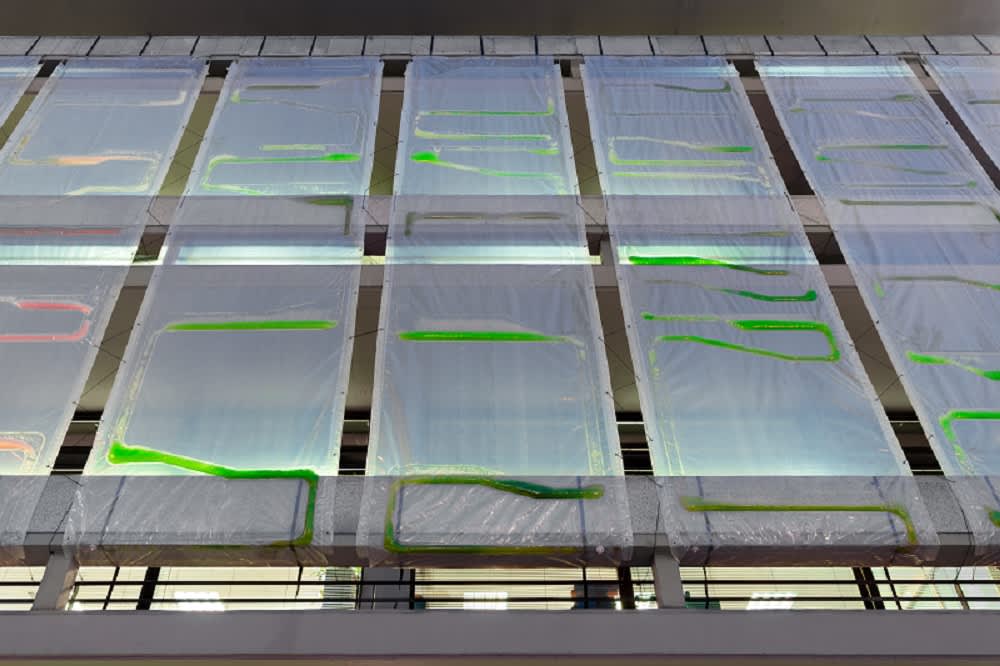
From smart thermostats that can be managed using our cellphones to energy efficient lightbulbs and rooftop solar panels, today's buildings use a wide range of technology to reduce their environmental impact.
In London, a system has been developed which could transform the way buildings look and behave.
Architectural and urban design practice ecoLogicStudio has produced what it describes as a "photosynthetic building cladding system."
Called PhotoSynthetica, it uses solar energy to take carbon dioxide (CO2) and other pollutants out of the atmosphere. The panels of the system harbor a solution containing algae microbes.
In the latest episode of CNBC's "Sustainable Energy" Marco Poletto, ecoLogicStudio's director, described how one of the bio-plastic prototypes works.
"The sun shines through the curtain and activates … photosynthesis," he said. "The design of this cavity is such that we can inoculate, or introduce, dirty air from the bottom," he added.
"The air naturally rises through and comes into contact with the molecules of the algae, which cleans it. And then clean air and oxygen is released from the top back into the atmosphere."
Poletto went on to explain why micro algae were useful for the system. "Their ability to capture CO2 is 10 times higher than large trees and that's because their entire body is photosynthetic," he said.
"So when we integrated it in our technology, even a thin layer has the same capacity to absorb CO2 as a micro forest. This offers renewed potential for integrating carbon capturing technology into dense and polluted urban environments."
Ideas like PhotoSynthetica could become important in the years ahead, as governments and businesses look to transform the built environment and make it more sustainable.
Speaking to CNBC, Derek Clements-Croome, an emeritus professor at the University of Reading, emphasized the importance of adapting and adding to existing buildings to make them more sustainable.
"I mean, this is very important that we do this because over 80% of the buildings that will be present in 2050 are already here now with us," he said.
"Now, when you're doing restoration, retrofit, the inside of the building is easier to cope with," he went on to explain. "It's usually the shell of the building which is the most challenging part."
"how" - Google News
November 01, 2019 at 04:46PM
https://ift.tt/2JEJsvb
How algae could improve the air quality of our towns and cities - CNBC
"how" - Google News
https://ift.tt/2MfXd3I
Bagikan Berita Ini
















0 Response to "How algae could improve the air quality of our towns and cities - CNBC"
Post a Comment